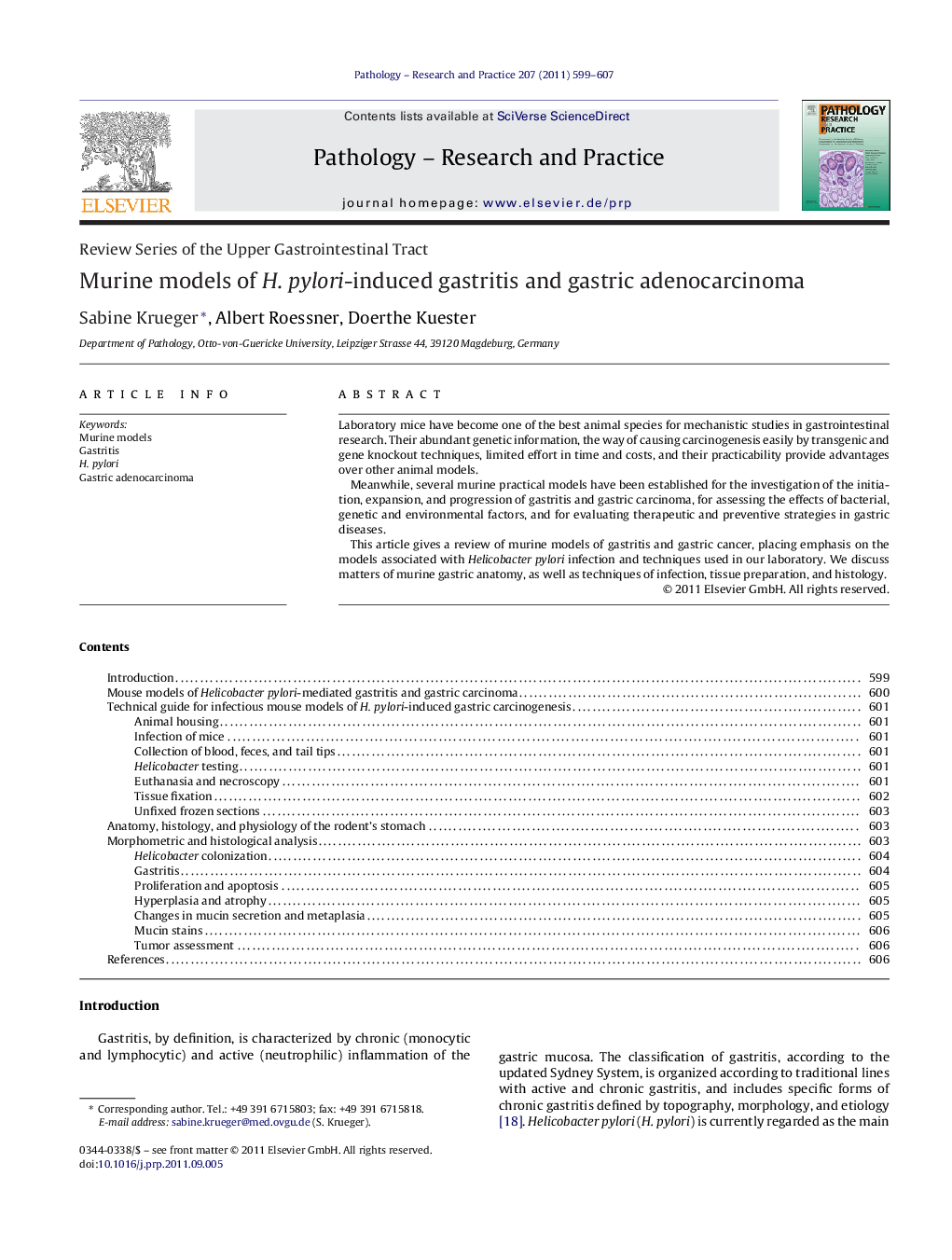| Article ID | Journal | Published Year | Pages | File Type |
|---|---|---|---|---|
| 2156108 | Pathology - Research and Practice | 2011 | 9 Pages |
Laboratory mice have become one of the best animal species for mechanistic studies in gastrointestinal research. Their abundant genetic information, the way of causing carcinogenesis easily by transgenic and gene knockout techniques, limited effort in time and costs, and their practicability provide advantages over other animal models.Meanwhile, several murine practical models have been established for the investigation of the initiation, expansion, and progression of gastritis and gastric carcinoma, for assessing the effects of bacterial, genetic and environmental factors, and for evaluating therapeutic and preventive strategies in gastric diseases.This article gives a review of murine models of gastritis and gastric cancer, placing emphasis on the models associated with Helicobacter pylori infection and techniques used in our laboratory. We discuss matters of murine gastric anatomy, as well as techniques of infection, tissue preparation, and histology.
